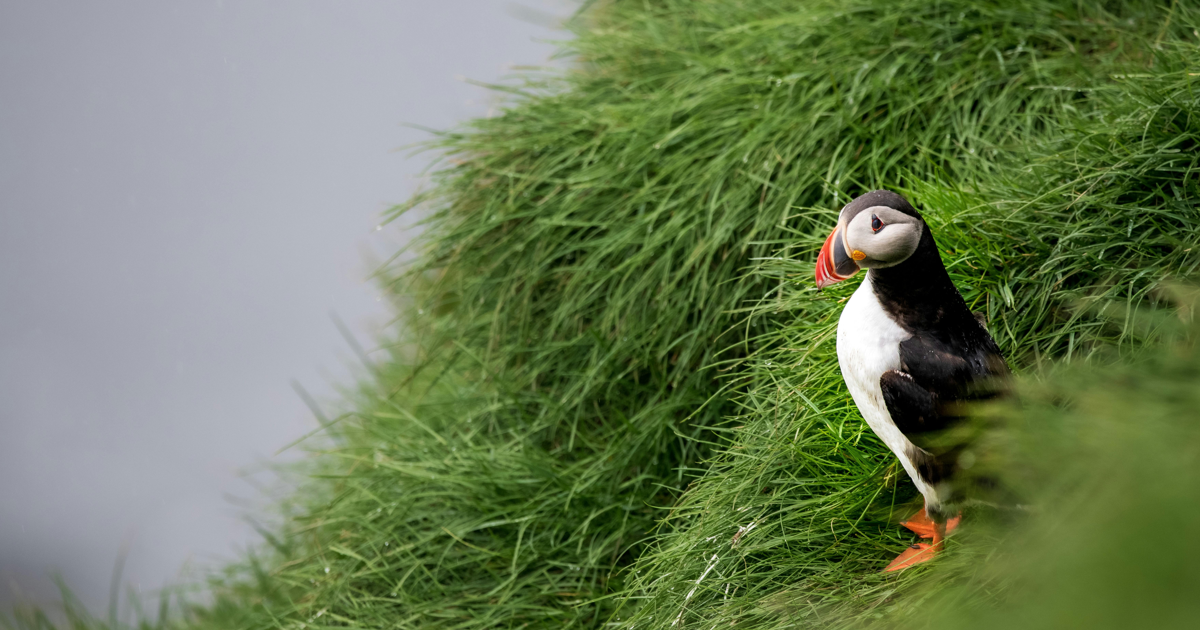
The northern country of Iceland is known for many things: the Northern Lights, its glaciers and volcanoes, and the Blue Lagoon.
But one thing that the country has recently been in the news for is more unusual than its natural beauty and geological activities.
Recently, the people of the Vestmannaeyjar (Westman Islands) of Iceland have been gathering at night to yeet baby puffins off of cliffs.
This sounds awful right? But this is not an act of animal cruelty, rather a mass human kindness.
As a recent feature in IFLScience explains, this is a tradition in Iceland, a country known for its love for these adorable birds.
When baby puffins – known as pufflings – are old enough to fledge their nests, they are adapted to fly out to sea.
This is why puffins make their nests on the side of cliffs, to give their pufflings the best head start on these fledgeling journeys.
The pufflings take their first flights at night, following the light of the moon.
This natural process has been going on for puffins throughout history.
But, relatively recently in evolutionary terms, humans invented electricity, which led to well-lit cities beaming light into the night sky.
Following their instincts, pufflings who don’t know any better can sometimes fly inland instead of out to sea, an exhausting and confusing mistake for these disorientated babies.
This mistake can threaten their survival.
Out of empathy for these confused baby puffins, the people of Iceland organised themselves to help. In puffling season, rescuers gather to assist the baby puffins in their fledgeling journeys.
These rescuers comprise both animal rescue professionals and everyday Icelanders, and it’s all hands on deck to rescue the pufflings.
In their plight to save as many of these baby birds as possible, extra infrastructure has been constructed, as the article continues.
This ranges from families and professional animal handlers collecting disorientated pufflings from the streets of Iceland, to special nets in the harbor that gather confused baby birds so that ships and their oil don’t threaten them.
So what exactly happens when a puffling’s fledgeling first flight goes awry?
One of the many rescuers steps in to help, give the exhausted baby bird a little time to rest and recuperate, before (s)he is thrown into the air the following night.
And when they become airborne again? Well this is where nature takes over, and the puffling’s natural reflexes come into play – helped in the right direction by benevolent Icelanders, as explained by Kyana Sue in Inspired By Iceland:
“Picking the pufflings up do not harm them and they are only kept in a box until the next day. The pufflings are brought to the south side of the Island. The location can be found on Google Maps as ‘Beautiful Puffin and Shore View.’ The cliffs and air are dotted with hundreds of adult puffins and families can be found releasing their puffins one by one into the wild.
Children of all ages and adults, hold firm to the pufflings as they throw them high into the air above the sea cliffs. Once the pufflings hit the air their wings flap rapidly and they take off towards the ocean. Occasionally a lazy puffling will flop to the group and hobble off the cliff but they instinctively begin to soar as they fall through the air.”
To see this spectacle? You just need to visit Iceland and head to the puffin release spots in puffling season.
Not only will you see the adorable puffins heading out on their maiden voyage, you’ll also bear witness to the kindness of human spirit – even when it takes an unusual form.
If you thought that was interesting, you might like to read about the mysterious “pyramids” discovered in Antarctica. What are they?